Sony is actively entering Web3 through the acquisition of centralized exchanges, the launch of the Soneium blockchain mainnet, and the development of stablecoins, aiming to build a comprehensive ecosystem and accelerate digital transformation.
Authors: Leo Park, Jay Jo, and Yoon Lee
Translation: Blockchain in Plain Language

Summary:
Sony is venturing into Web3 in pursuit of a new growth phase. Key initiatives include the acquisition of centralized trading platforms (CEX), the launch of the Soneium blockchain mainnet, and the development of stablecoins.
Sony's Web3 strategy focuses on three pillars: non-financial (entertainment and gaming), financial (stablecoins, security tokens), and infrastructure. By connecting these areas, Sony aims to build a comprehensive Web3 ecosystem.
Under the vision of "Beyond Boundaries," Sony's approach will accelerate digital transformation, create new revenue streams, and enhance synergies.
1. Introduction
Sony was once a symbol of Japan's economic growth and a leader in electronics, gaming, and entertainment, but its advantages began to wane in the 2000s. The company struggled to adapt to the rapid transition from analog to digital, facing competitive pressure from companies like Samsung. This difficulty in responding to market changes led Sony into a crisis.
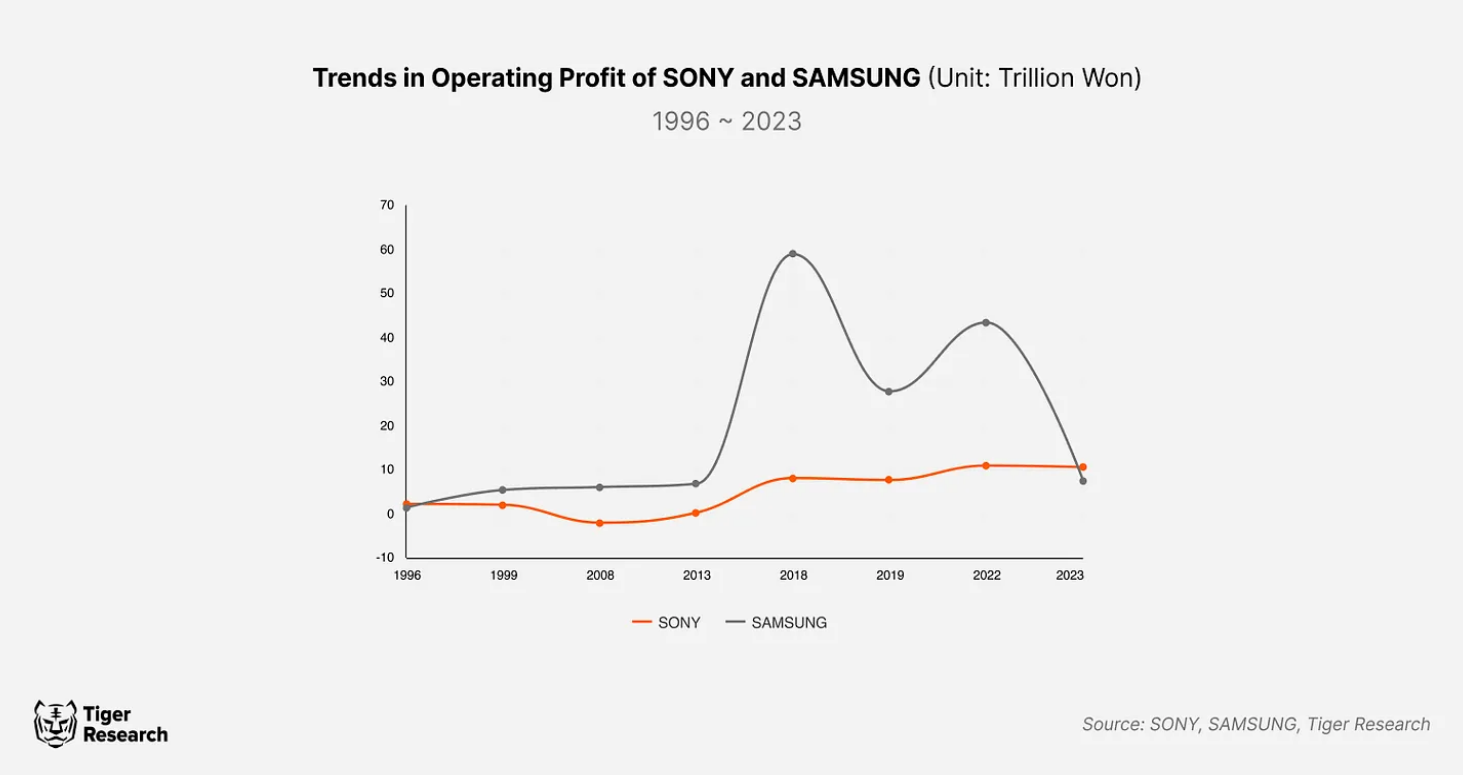
In response, Sony took decisive measures to overcome challenges and embark on a new growth phase. The company significantly reduced its reliance on the electronics business, which accounted for 70% of its total revenue, and shifted its focus to the future-oriented entertainment industry. This bold restructuring laid the foundation for future growth and profitability. By 2023, Sony surpassed Samsung in operating profit for the first time in 24 years—an achievement that, while possibly temporary, highlights the success of Sony's transformation and innovation.

Sony's pursuit of innovation has gone further. At its recent annual strategy meeting, the company announced its commitment to pursuing innovation that transcends industry boundaries, with the slogan "Beyond Boundaries." This aligns with Sony's recent initiatives to enter the Web3 space. This report will examine Sony's blockchain initiatives and explore its vision for the Web3 industry. By doing so, we aim to gain insights into Sony's future vision for the Web3 space and its strategic direction.
2. Sony Group Officially Enters the Web3 Industry
Sony's pursuit of innovation has gone further. At its recent annual strategy meeting, the company announced its commitment to pursuing innovation that transcends industry boundaries, with the slogan "Beyond Boundaries." This aligns with Sony's recent initiatives to enter the Web3 space. This report will examine Sony's blockchain initiatives and explore its vision for the Web3 industry. By doing so, we aim to gain insights into Sony's future vision for the Web3 space and its strategic direction.

2017: Sony Global Education develops a blockchain-based digital education platform.
2018: Sony Corporation, Sony Music, and Sony Global Education jointly develop a blockchain digital content copyright management system.
2018: Sony Computer Science Laboratories (CSL) develops cryptocurrency hardware wallet technology using IC cards.
2020: Sony develops a blockchain-based database platform for a smart city research project in the Netherlands.
2021: Sony Pictures offers NFTs to pre-purchase customers of "Spider-Man: No Way Home."
2022: Sony Interactive Entertainment applies for Web3 technology patents, including in-game NFTs.
2022: Sony Group establishes "SNFT," a subsidiary operating an NFT marketplace.
2023: Sony Network Communications and Startale Labs establish a joint venture to build a blockchain mainnet.
2023: Sony Group subsidiary Quetta Web acquires the centralized trading platform "WhaleFin."
2024: Sony Bank begins proof-of-concept experiments for stablecoin issuance.
2024: Sony Bank develops a mobile NFT platform called "Connect."
2024: Sony Blockchain Solutions Lab announces the launch of the Ethereum L2 mainnet "Soneium."
Sony has been actively investing in and developing blockchain technology from early on. Various Sony subsidiaries across different industries are exploring ways to integrate blockchain into their respective fields. The first significant move was in 2016 when Sony Global Education announced plans to develop a blockchain-based digital education platform.
The experience gained from developing this digital education platform quickly expanded to other areas. Sony Music Entertainment applied the technology to the certification, sharing, and copyright management systems for digital content, including music, movies, and e-books. In 2018, Sony Computer Science Laboratories launched a hardware cryptocurrency wallet based on contactless IC cards. By 2019, Sony had established a blockchain-based database platform for the Dutch government's smart city research project.
Since 2022, Sony's blockchain-related initiatives have significantly accelerated, aligning with the Kishida government's policies promoting the Web3 industry. Sony is shifting from blockchain research to transforming this technology into viable business models. Recent initiatives, such as acquiring centralized trading platforms, announcing plans to issue stablecoins, and launching its own blockchain mainnet, reflect this shift. Notably, Sony is boldly expanding into core areas of the Web3 ecosystem, breaking traditional business boundaries to challenge the Web3 industry. The following sections will explore Sony's recently announced Web3-related businesses.
1) Business Expansion through CEX Acquisition
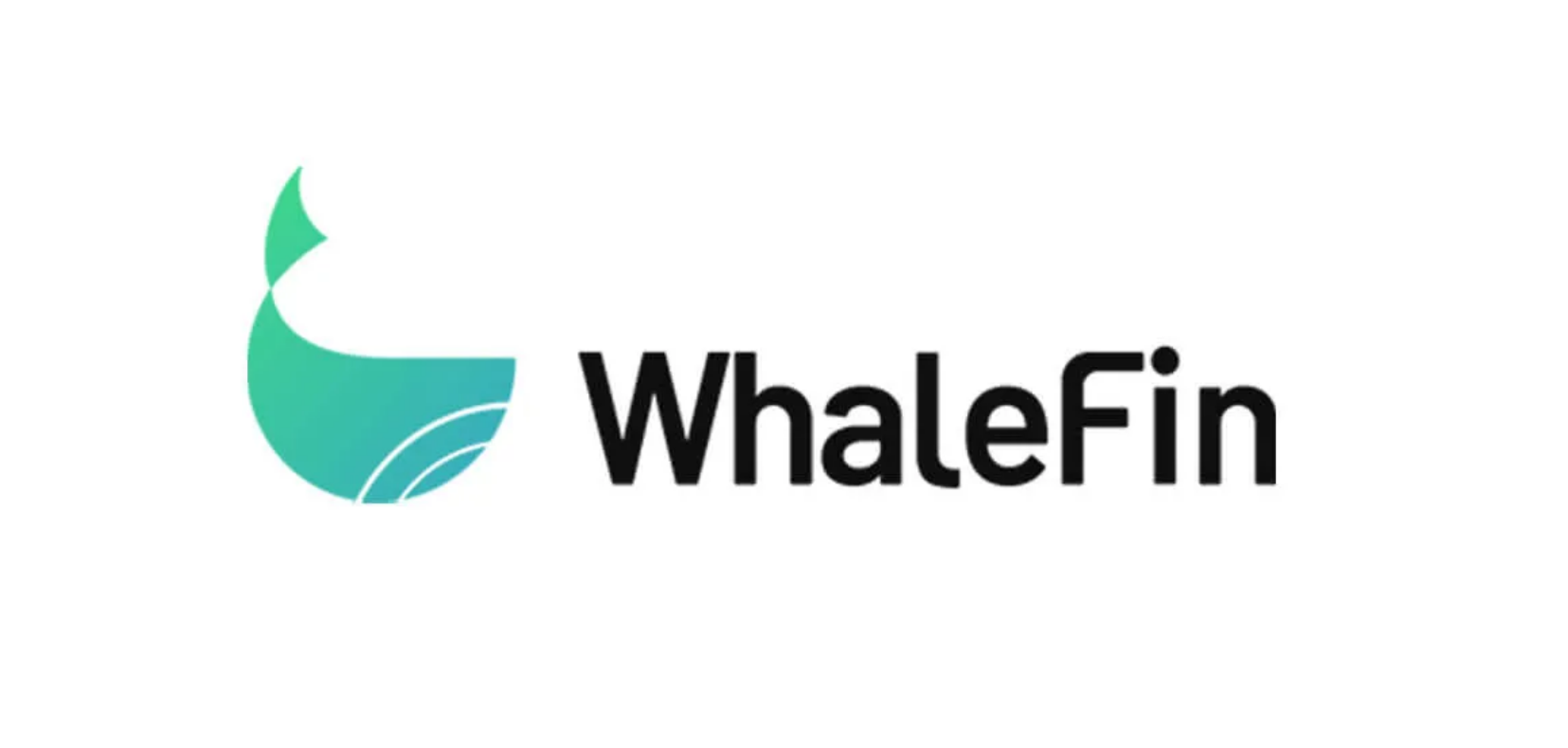
In August 2023, Sony acquired the centralized trading platform "WhaleFin," marking its official entry into the trading business. WhaleFin was initially launched under the name DeCurret and is a Japan-registered centralized trading platform service provider that was acquired by Amber Group in 2022, ultimately being fully acquired by Sony Group's wholly-owned subsidiary Quetta Web.
Recently, Sony rebranded WhaleFin as "S.BLOX" and aims to expand its trading business. The company intends to enhance the user experience of the trading platform and create new value in crypto trading by leveraging Sony Group's diverse business connections. Despite these ambitions, S.BLOX currently lacks competitiveness compared to other trading platforms. The platform offers only nine cryptocurrencies, has low trading volume, and generates revenue that is 20 times less than Japan's leading trading platform Bitflyer, raising questions about its future potential.
Nevertheless, there is still room for synergistic development through Sony's acquisition. Centralized trading platforms serve as entry points into the Web3 industry and can create significant synergies through businesses that rely on them, especially given the current challenges of entering and exiting the cryptocurrency market. Additionally, Sony's integration across various Web3 sectors is expected to help enhance the competitiveness of the trading platform.
2) Soneium, Sony's Blockchain Infrastructure Business
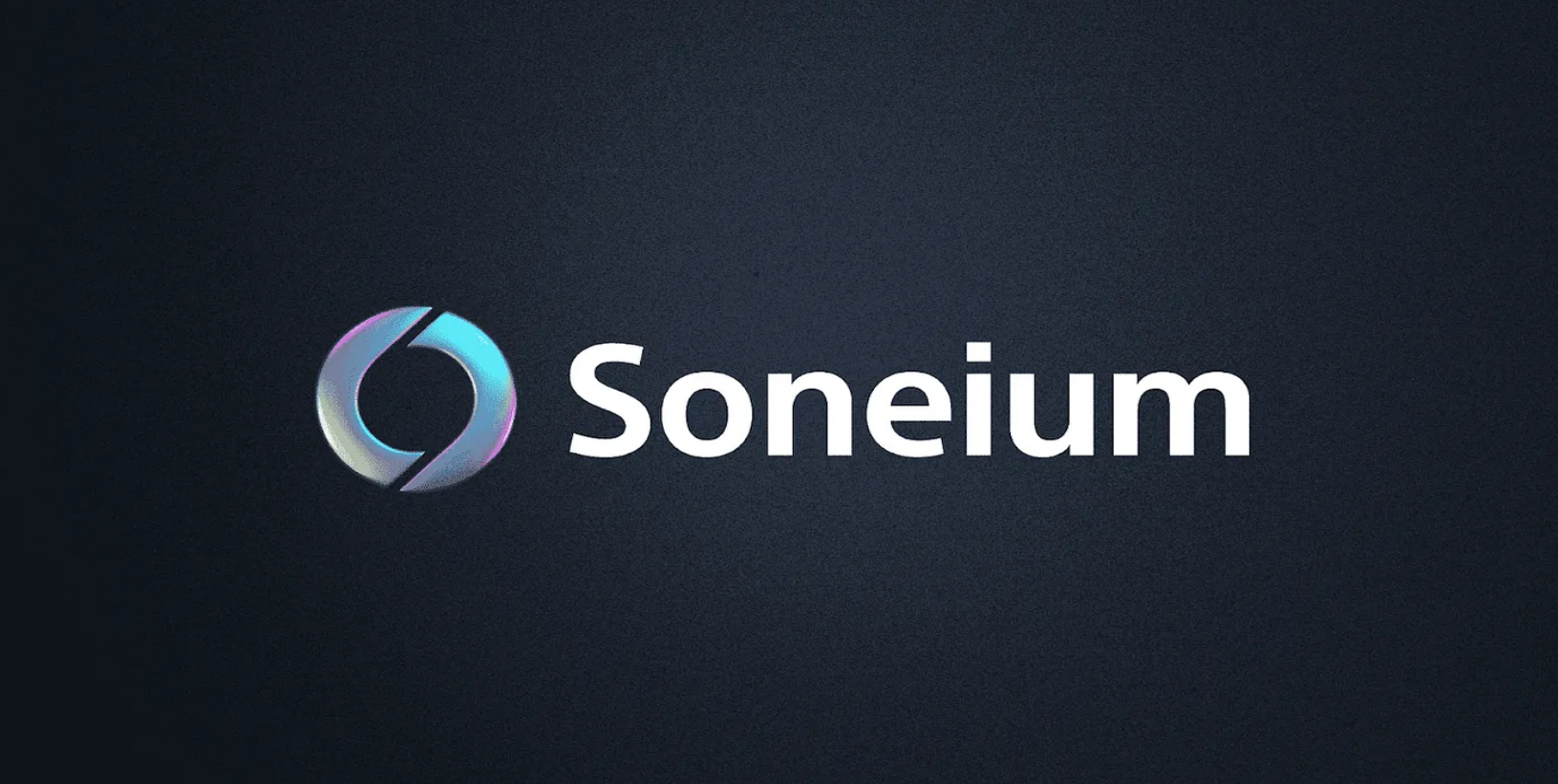
Sony Blockchain Solutions Lab announced its official entry into the mainnet business, planning to launch the Ethereum Layer 2 blockchain "Soneium," a message released about a year after establishing a joint venture with Startale Labs.
With this announcement, the name of the joint venture was changed from "Sony Network Communications Lab" to "Sony Blockchain Solutions Lab." Sony Group holds a 90% stake in the joint venture, while Startale Labs holds the remaining 10%. Given Sony Group's controlling stake, the joint venture is expected to play a core role in Sony's Web3 strategy, providing infrastructure for the application and integration of Web3 technology across various departments.
Notably, the strategic approach of Sony Blockchain Solutions Lab is not just about launching a new mainnet. By integrating Astar's zkEVM technology into Soneium, Sony aims to leverage this technological asset to accelerate business development. This approach aligns with Sony's recent track record of success through bold innovation, contrasting with Japan's traditionally conservative corporate culture.
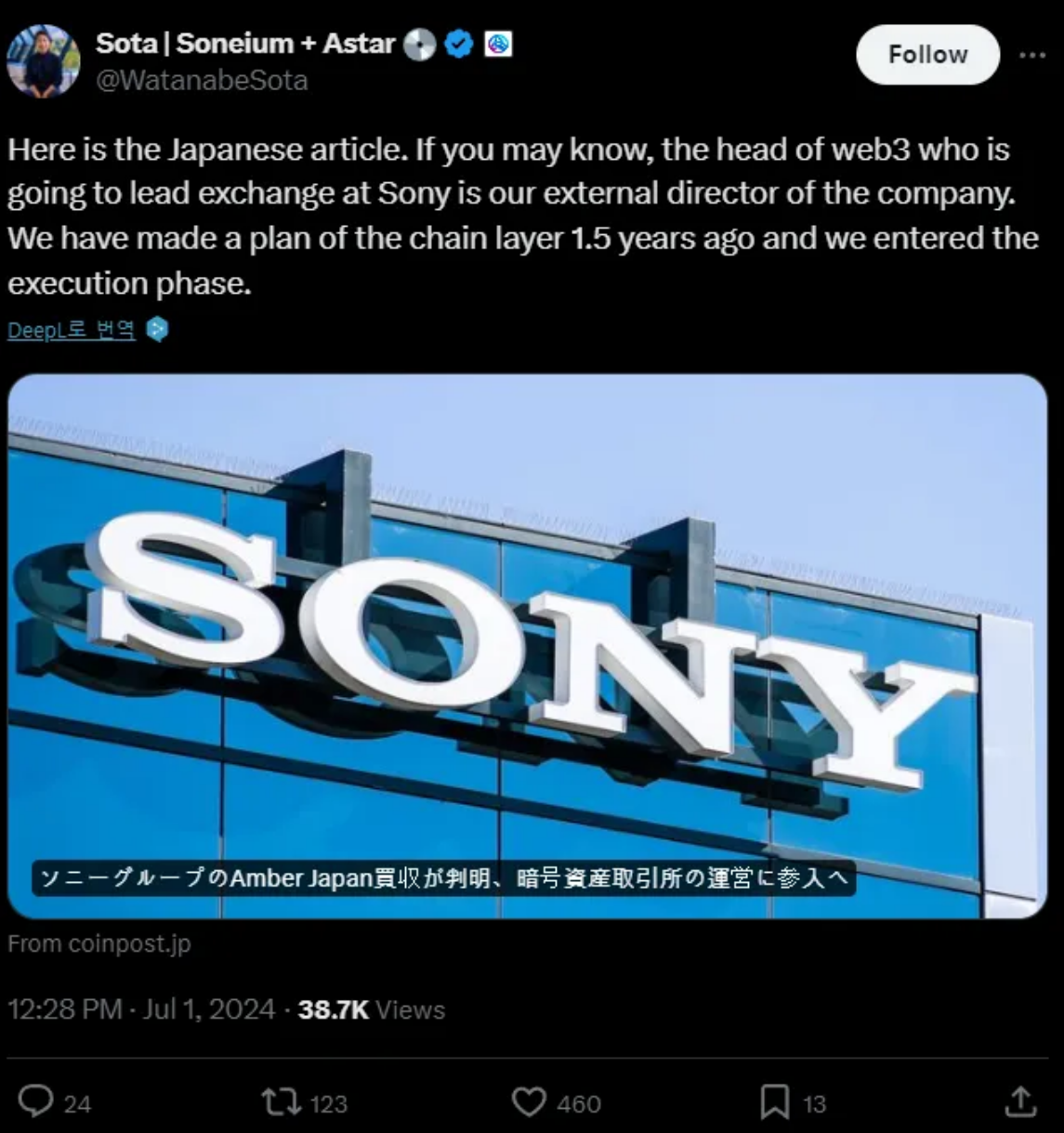
The personnel structure is also noteworthy. Sony Blockchain Solutions Lab is led by Jun Watanabe, former president of Sony Network Communications and a board member of Startale Labs. He is also responsible for Sony Group's cryptocurrency trading platform S.BLOX. This leadership arrangement not only highlights the potential for internal collaboration within Sony Group but also suggests closer business opportunity connections between Startale Labs and Astar Network.
3) Sony's Stablecoin Business
Sony has shown a strong intention to enter the stablecoin market. According to a report by Nikkei in April, Sony Financial Group's Sony Bank has begun experimenting with issuing stablecoins based on various fiat currencies, including the yen. This move seems aimed at exploring the potential use of stablecoins as a digital payment method within the broader Sony Group.
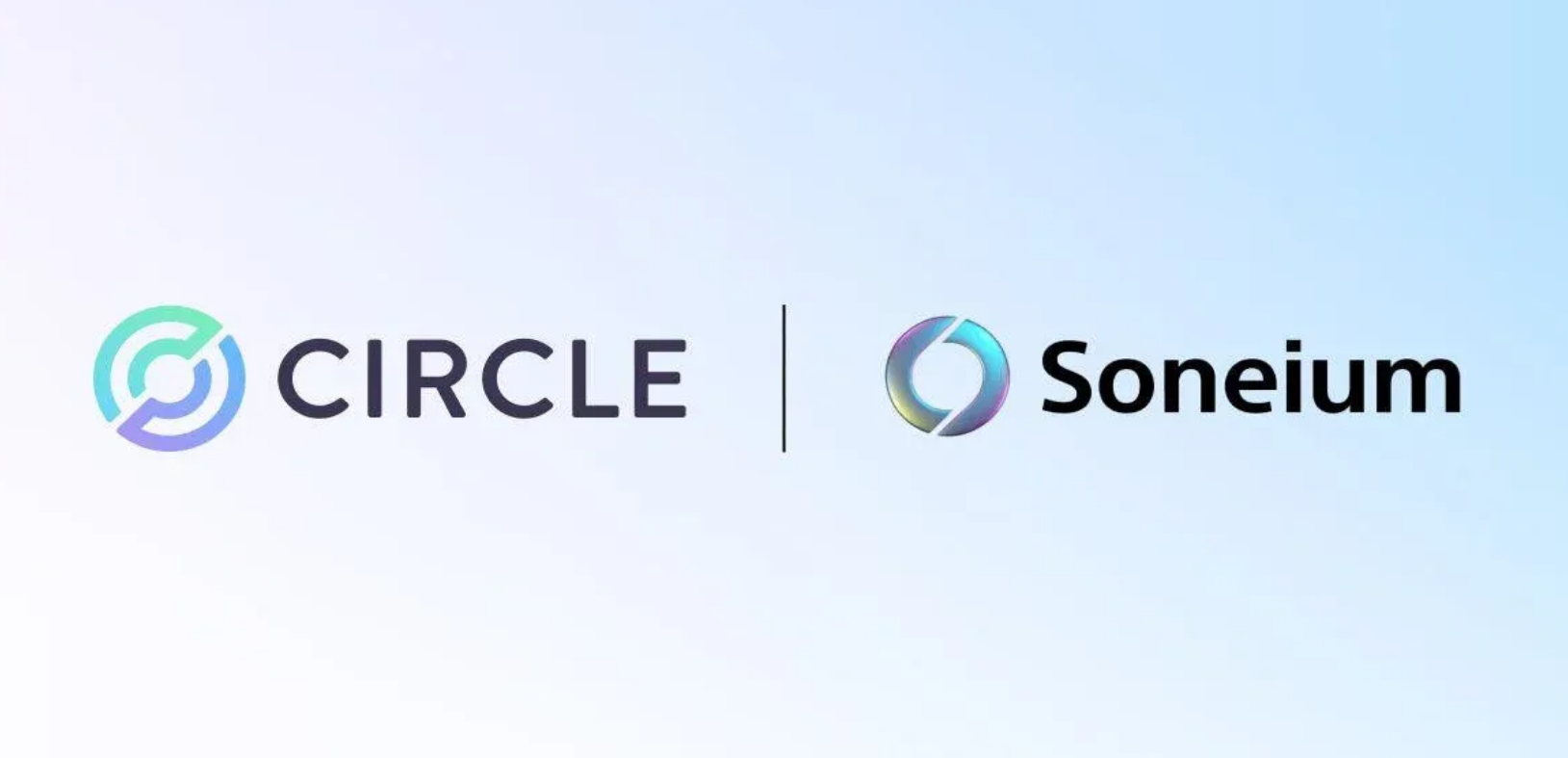
Meanwhile, Soneium's involvement in stablecoins has also heightened interest in stablecoin-related businesses within Sony Group. In September, Soneium announced a partnership with Circle, the issuer of the USDC stablecoin, planning to support USDC within the Soneium ecosystem.
This move has sparked discussions about whether Sony will issue its own stablecoin on the public Soneium mainnet. However, this plan is expected to face significant challenges. Regulators have indicated that issuing stablecoins on a public mainnet, especially those issued by banks, carries risks and may require potentially time-consuming regulatory changes.
Despite these difficulties, the involvement of leading Japanese internet banks like Sony Bank is seen as a positive signal for the industry. If Sony Bank can successfully issue stablecoins on Soneium, it could support various applications, including cross-border payments through integration with USDC. The future development in this area is worth close attention.
3. Where Will Sony's Web3 Business Go?
Sony plans to adopt a comprehensive Web3 business strategy that encompasses multiple subsidiaries. This strategy may be built around three key pillars: 1) Non-financial sector, 2) Financial sector, 3) Infrastructure.
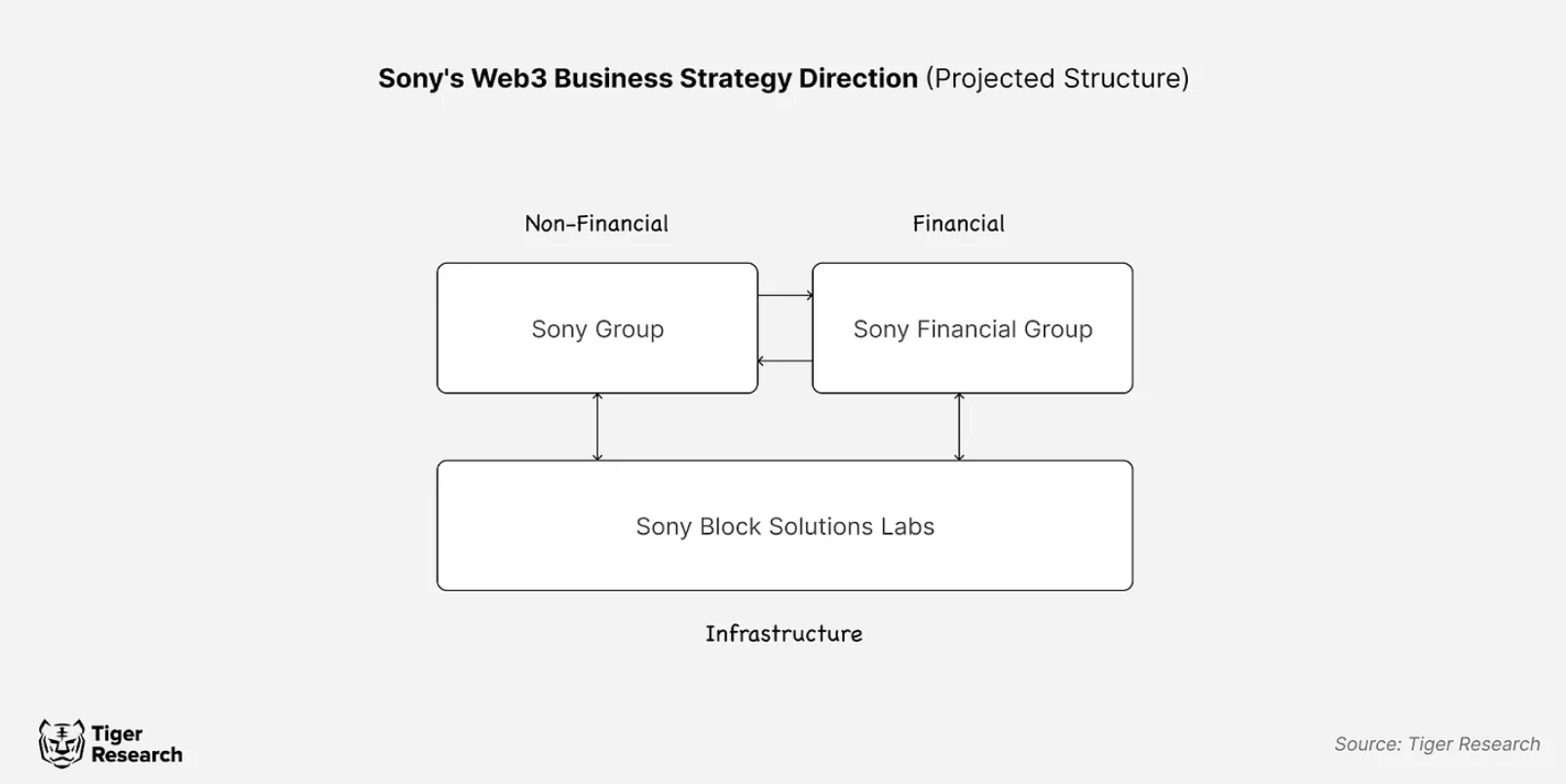
The non-financial sector is expected to be led by Sony Group, particularly focusing on leveraging Web3 technology in entertainment and gaming. Sony Music has already launched NFTs based on its artists' intellectual property and is actively exploring the commercialization of music IP through Web3 technology. Discussions on utilizing Web3 in the gaming industry are heating up, as evidenced by recent patents related to NFT and SFT technology.
The financial sector is expected to be led by Sony Financial Group, which is currently preparing to spin off from Sony Group. They will focus on the integration of Web3 technology with the financial industry, including stablecoins and security tokens. Sony Bank is already developing stablecoins and is the first Japanese bank to sell loan bonds as security tokens. Based on this, Sony Financial Group is expected to further expand the application of Web3 technology in the financial sector.
Finally, the Sony Blockchain Solutions Lab is expected to manage the infrastructure that underpins all of Sony's Web3 initiatives. Although the lab is effectively part of Sony Group due to Sony's controlling stake, it is expected to provide infrastructure services for both Sony Group and Sony Financial Group, acting as a bridge between the two. By efficiently utilizing Sony's assets, the Sony Blockchain Solutions Lab is expected to become a core driver of synergy in Sony's Web3 business.
These three areas may organically connect with each other. For example, stablecoins issued by Sony Financial Group could serve as a payment method within Sony Group, or various intellectual property assets of Sony could be tokenized by Sony Financial Group. This rich opportunity for collaboration allows Sony to establish a comprehensive Web3 ecosystem that spans its diverse business areas.
4. Conclusion

Sony dominated the electronics market in the 1990s with the Walkman but struggled to diversify in the 2000s. The rise of Apple's iPod weakened the position of the Walkman, while competition from Korean companies like Samsung and LG in the LCD TV market further threatened Sony's status. The company failed to keep pace with the rapid transition from analog to digital, leaving it in a vulnerable position.
To recover, Sony adopted a "select and focus" strategy. They cut underperforming businesses and made significant investments in core areas with high growth potential. As part of this transformation, Sony has viewed blockchain technology as a new growth driver and is actively exploring related business opportunities. Combining blockchain with Sony's rich entertainment content (including gaming, music, and movies) is expected to create innovative user experiences and business models.
This approach may accelerate the digital transformation of Sony's existing business areas while opening up new revenue streams. In line with its recent vision of "Beyond Boundaries: Maximizing Synergies Within the Group," blockchain technology is expected to play a key role in creating synergies between Sony's various departments. We will watch closely how this long-standing industry leader leverages blockchain to create new value and enhance its market position.
Article link: https://www.hellobtc.com/kp/du/10/5481.html
Source: https://reports.tiger-research.com/p/asia-giant-sony-web3-eng?utmsource=%2Finbox&utmmedium=reader2
免责声明:本文章仅代表作者个人观点,不代表本平台的立场和观点。本文章仅供信息分享,不构成对任何人的任何投资建议。用户与作者之间的任何争议,与本平台无关。如网页中刊载的文章或图片涉及侵权,请提供相关的权利证明和身份证明发送邮件到support@aicoin.com,本平台相关工作人员将会进行核查。




